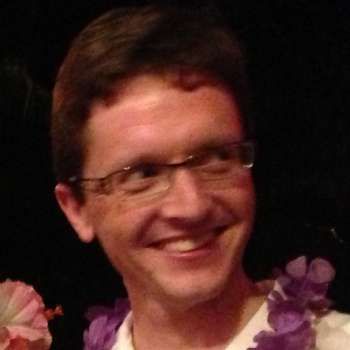Turandot was a sound choice for Opera Australia’s fifth Handa Opera on Sydney Harbour (HOSH): aside from its killer Act III aria, the opera contains several dramatic crowd scenes offering plenty of opportunities for pageantry. The production directed by Chen Shi-Zheng was certainly a feast for the eyes, but mercifully less excessive than last year’s Aida. However, neither was it as thought-provoking as the 2014 Butterfly, read as a political allegory for the consequences of rampant capitalism. We were offered a fairly straightforward narration of the judiciously shortened story, with plenty of special effects that capitalised on the possibilities offered by the outdoor location.
Dan Potra’s set was dominated by an enormous dragon’s head on the left and a towering pagoda-like structure on the right: visual orientalisms to complement a work which Puccini described as containing "so much Chinese mannerism". Early publicity emphasised that the Chinese-born director was using these iconic images knowingly rather than as lazy signifiers for the cultural milieu of the story, although the viewer could be forgiven for not being able to tell the difference. Along the back wall a series of changing images and patterns designed by Leigh Sachwitz were projected: the faint orange light signalling dawn in Act III was particularly beautiful. Further eye-candy was provided by long-sleeved female dancers and sabre-toting warriors.
The opera began as the Mandarin was swung into place by a crane (provoking audible gasps from the seats near me) and his opening monologue was delivered from 10 metres up. All credit to Gennadi Dubinsky for not letting his lofty perch interfere with his tone production. In Act II, the crane supported the suspended throne of the Emperor (played by the impressive David Lewis). But possibly the most spectacular moment of the evening came at the end of Act I, where the nameless hero’s challenge was answered by a burst of flame from the dragon’s mouth. This almost compensated for the crass intrusion of fireworks just after the singer’s last note in “Nessun dorma”, before the orchestra resumed the play-out. If these are obligatory, why not have them at the triumphant close of Act II or III?
In our pop-culture-obsessed world, it can hardly have been an accident that Turandot, the famously icy princess, should have emerged from a tower shaped like a Dalek, the emotionless, murderous enemies of Dr Who. The famous riddle scene, in which she puts three questions to her would-be suitor, saw the platform descend in three slightly wobbly stages. (In an otherwise cleverly designed set, the very visible intrusion of stagehands who put up a temporary staircase to allow her to complete her descent was very makeshift.)
2015 saw Opera Australia’s most recent indoors production of Turandot and more than a few cast members reprised their roles here. Among these was Hyesoung Kwon as Liù, who again delivered a lovely rendition of “Signore ascolta” in Act I, and deservedly got the biggest applause of the night. Benjamin Rasheed joined the returning John Longmuir and Luke Gabbedy as (respectively) Pang, Pong and Ping: they worked well together, with Gabbedy’s focussed baritone particularly pleasing. Conal Coad was appropriately quavery as the elderly Timur. The chorus was reliable as ever, even if the vibrato was a touch on the excessive side.
Less completely satisfactory were the two principals. Dragana Radakovic certainly seemed to possess the high-voltage sound needed for the title role, although it is difficult to assess this what with the electronic amplification. The downside was that this volume came at the cost of a lack of precision above the staff – the pitch of her top notes had to be guessed at inside a vibrato that covered a generous whole tone’s amplitude. Riccardo Massi started promisingly as Calàf, sounding warm-toned and secure in his interactions with his father and Liù. Less to my taste was his upper register, where he pushed into virtually every high note by leaning first on the note below. This tenor mannerism became wearing over the course of the evening. His “Nessun dorma” was adequate, but didn’t come up to the stunning level reached by Yonghoon Lee in OA’s last production.
Some earlier HOSH productions have been over-amplified, but this one seemed just right where I was sitting to the right of the stage. The balance of sound was tilted towards the singers, save where things had been artificially adjusted (such as the unnaturally clear harp sound during “Signore ascolta”). Brian Castle-Onions directed the orchestra with only a few tiny moments where the coordination with the singers became a little problematic.
Now a fixture on the international calendar, where to for HOSH? The nature of the event dictates that only bankable hits will be produced, so this presumably means a diet rich in Puccini and Verdi for the foreseeable. It would be nice to have a Figaro or Don Giovanni soon, if only to showcase the lighter side of opera for once.




